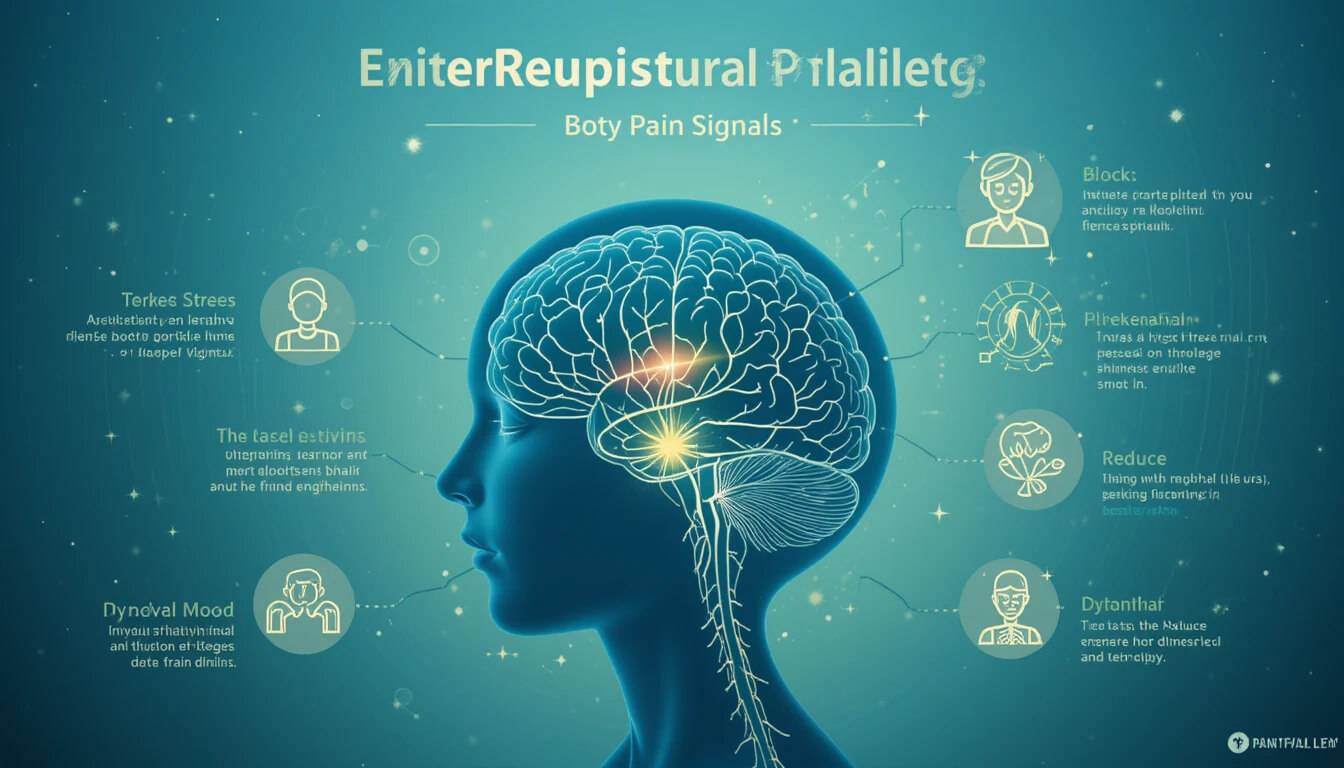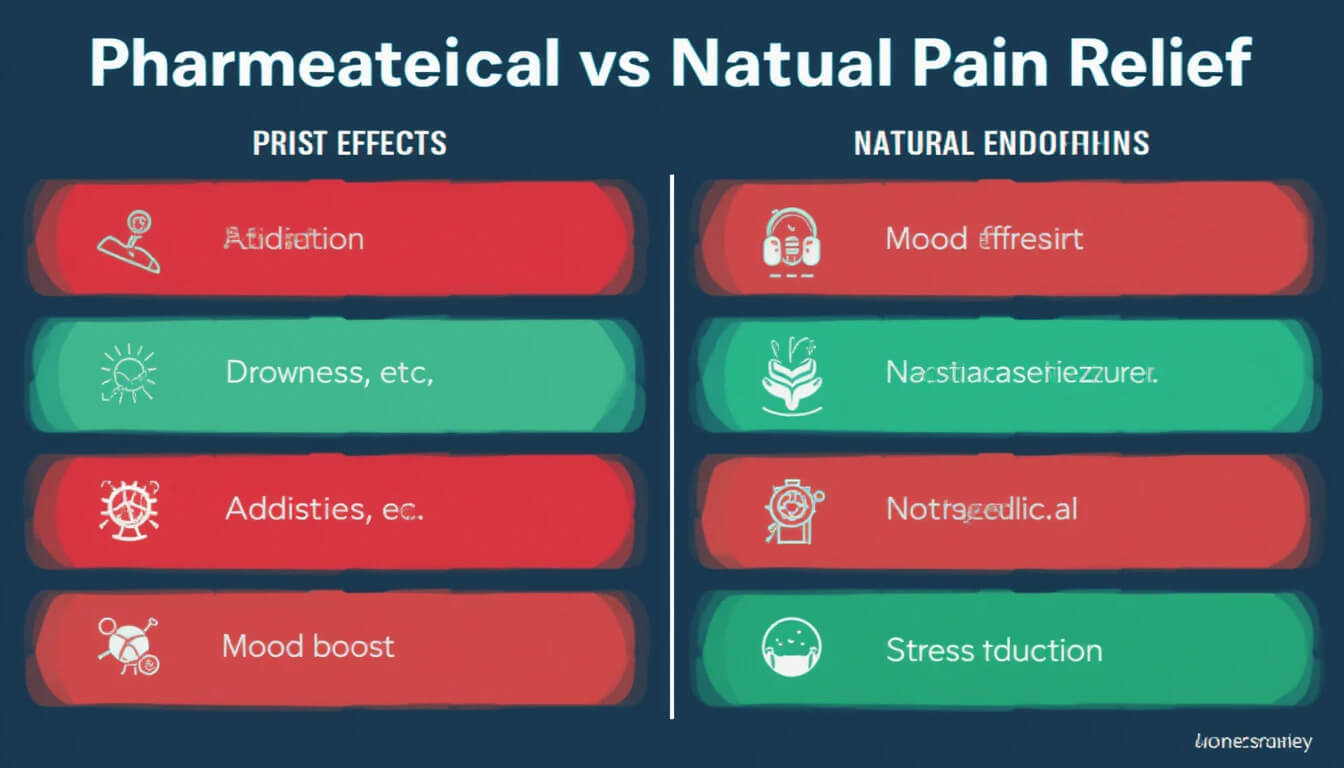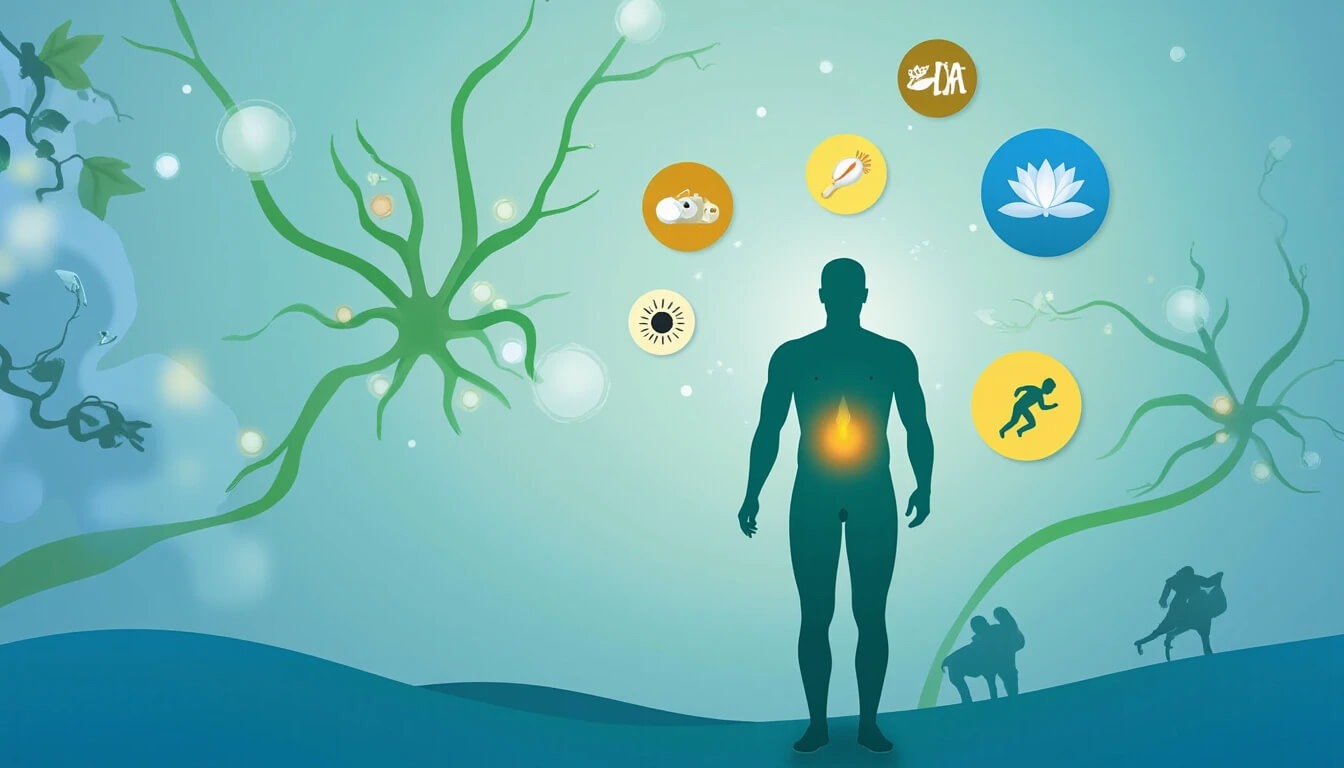Discover the powerful, medication-free pain relief system already inside you, as revealed in a fascinating discussion with Dr. Sanjay Gupta.
Have you ever wondered if there's a better way to manage pain than constantly reaching for a pill bottle? It's a question millions ask every day. On a memorable segment of "CBS Sunday Morning," legendary journalist Jane Pauley sat down with Dr. Sanjay Gupta to explore this very topic, and the conversation was nothing short of revolutionary. It highlighted a profound truth: our bodies are equipped with their own powerful, internal pharmacy, capable of producing painkillers that can be more effective and safer than opioids.
This topic is more critical than ever. In a world grappling with the opioid crisis and the side effects of chronic medication use, understanding and activating our natural pain-relief mechanisms isn't just a wellness trend—it's a life-changing necessity.
In this in-depth guide, we'll dive deep into the science Dr. Gupta shared with Jane Pauley. You will learn exactly what these natural painkillers are, how they work, and most importantly, the practical, science-backed steps you can take today to unlock your body’s incredible ability to heal itself.
The Landmark Interview: When Jane Pauley Met Dr. Gupta
The "CBS Sunday Morning" segment wasn't just another health report; it was a masterclass in empowerment. Viewers watched as Jane Pauley, with her signature blend of curiosity and empathy, guided Dr. Sanjay Gupta to break down complex neuroscience into understandable, actionable wisdom. The core message was that the conversation around pain management needs to shift. Instead of solely asking, "What can I take for my pain?", we should also be asking, "What can I do to help my body manage pain?" This interview served as the catalyst for many to explore the very methods we'll discuss below.What Exactly Are Natural Painkillers? Your Body’s "Endogenous Opioids"
Dr. Gupta explained that our bodies produce a class of neurochemicals called endogenous opioids. The most famous of these are endorphins. The term itself means "endogenous morphine"—literally, morphine produced inside your body.
Unlike pharmaceutical opioids, which come with a high risk of addiction and side effects, our body’s natural versions are perfectly regulated. They bind to the same opioid receptors in the brain to block pain signals, reduce stress, and create a sense of well-being (often called a "runner's high"). This is the powerful system that Dr. Gupta urged Jane Pauley and her audience to tap into.

Unlocking Your Internal Pharmacy: 5 Science-Backed Ways to Boost Natural Pain Relief
So, how do we flip the switch on this incredible internal system? Drawing from the principles discussed in the Jane Pauley segment and supported by extensive research, here are five powerful strategies.1. Movement as Medicine: The Endorphin Rush
This is perhaps the most well-known method. When you engage in sustained aerobic exercise, your body releases a flood of endorphins.
-
How it Works: Physical stress from exercise signals the brain to release endorphins as a protective mechanism to mask pain and create a feeling of euphoria.
-
Actionable Tip: You don't have to run a marathon. The Mayo Clinic suggests that as little as 20-30 minutes of moderate-intensity activity like brisk walking, swimming, or cycling most days of the week is enough to trigger this response. Start where you are and be consistent.
2. Mind Over Matter: How Mindfulness and Meditation Rewire Pain
Dr. Gupta emphasized the brain's role not just in producing pain but in perceiving it. Mindfulness and meditation can fundamentally change your relationship with pain.
-
How it Works: Meditation practices, particularly mindfulness, have been shown to thicken the prefrontal cortex, the part of the brain associated with emotional regulation. This allows you to observe pain without the secondary emotional suffering (like fear or anxiety) that often makes it worse.
-
Actionable Tip: Try a simple 5-minute guided meditation. Apps like Headspace or Calm are excellent resources. Focus on your breath and notice sensations in your body without judgment. This practice, over time, helps uncouple the physical sensation from the emotional reaction.
-
For a deeper dive, check out our Care and Prayer guide on Major Salmonella Outbreak Linked to Eggs: 95 Sickened & How to Keep Your Family Safe
3. The Power of Human Connection and Touch
Positive social interaction and physical touch are potent natural painkillers.
-
How it Works: Activities like hugging, cuddling, or even a compassionate touch can release oxytocin, another powerful hormone that reduces stress and pain perception. Acupuncture and massage therapy also stimulate the nervous system in ways that prompt the release of endorphins.
-
Actionable Tip: Make time for a heartfelt hug with a loved one. Consider booking a massage or trying an acupuncture session. As Jane Pauley’s interviews often show, human connection is a fundamental part of our well-being.
4. Fueling Relief: Anti-Inflammatory Foods That Help
Chronic inflammation is a major driver of chronic pain. Your diet plays a huge role in either fanning the flames or calming them down.
-
How it Works: Foods rich in omega-3 fatty acids, antioxidants, and polyphenols fight inflammation at a cellular level, reducing the overall pain load on your body.
-
Actionable Tip: Incorporate more foods like fatty fish (salmon, mackerel), leafy greens (spinach, kale), berries, nuts, and turmeric into your diet. Gradually reduce processed foods, sugar, and unhealthy fats.
5. Laughter Is No Joke: The Science Behind a Good Laugh
A hearty laugh isn't just fun—it's therapeutic.
-
How it Works: Research published in the Proceedings of the Royal Society B found that genuine, social laughter increases our pain threshold. It’s believed that the physical act of laughing causes the abdominal muscles to contract, triggering an endorphin release.
-
Actionable Tip: Watch a funny movie, listen to a comedy podcast, or spend time with people who make you laugh. Be intentional about seeking out joy and humor.

Integrating Natural Methods Safely: A Holistic Approach
It's crucial to remember that this approach doesn't mean rejecting modern medicine. The key is integration. Always talk to your doctor before making significant changes, especially if you're dealing with severe or chronic pain. The goal is to use these natural methods as powerful tools in your arsenal, reducing your reliance on medication and empowering you to take an active role in your own health journey—a central theme of Dr. Gupta's message to Jane Pauley and her viewers.
2. Can natural painkillers completely replace my pain medication?
For some types of mild to moderate pain, natural methods may be sufficient. However, for chronic or severe pain, they are often best used as part of an integrative approach alongside conventional medical care. Always consult your doctor before stopping or changing any prescribed medication.
3. How long does it take to feel the effects of boosting natural painkillers?
The effects vary. An endorphin rush from exercise can be felt almost immediately. The benefits of dietary changes or mindfulness practice are more cumulative and may take several weeks of consistent effort to become noticeable.
4. Are there any risks to these natural methods?
For most people, these methods are very safe. The primary risk is overexertion with exercise, so it's essential to start slowly and listen to your body. It's always a good idea to discuss new health strategies, even natural ones, with a healthcare professional.
5. Which method is most effective for pain relief?
The "best" method is highly individual. Some people respond incredibly well to exercise, while others find more relief from mindfulness or acupuncture. The most effective approach is often a combination of several strategies tailored to your lifestyle and needs. The interview featuring Jane Pauley was impactful because it showcased this variety of options.
The conversation between Jane Pauley and Dr. Sanjay Gupta on "CBS Sunday Morning" was a powerful reminder that we are not passive victims of our pain. We are active participants in our healing, equipped with a remarkable internal pharmacy waiting to be unlocked.
By integrating movement, mindfulness, nutrition, and connection into our lives, we can tap into our body's own potent painkillers. This journey isn’t about finding a single magic bullet, but about building a holistic, sustainable lifestyle that fosters resilience and well-being. You have the power to change your relationship with pain, starting today.
What's one natural pain-relief strategy you're excited to try? Share your thoughts in the comments below!
The team at Care and Prayer is dedicated to providing clear, credible, and empowering health information. We believe that everyone deserves the knowledge to take control of their well-being, inspired by leading voices in science and journalism.
